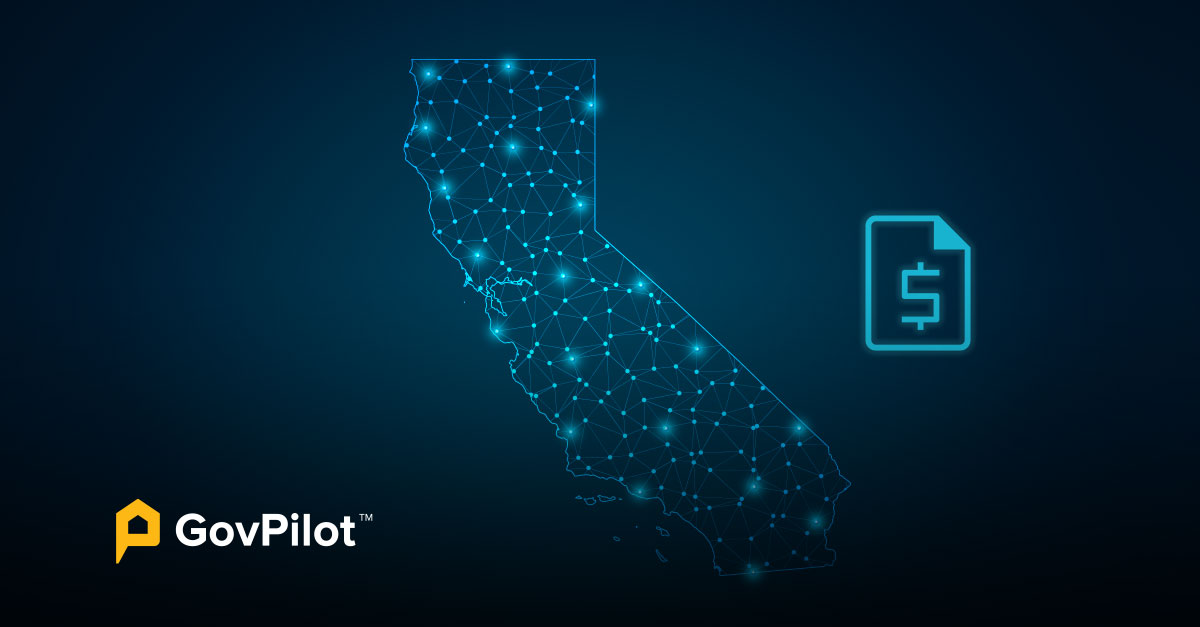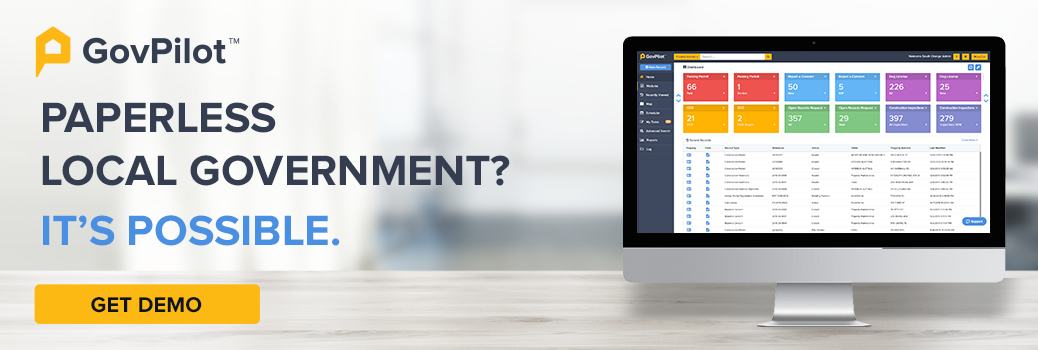On June 27th, California Governor Gavin Newsom signed Senate Bill 101 into law, passing the $310.8 billion budget just in time for the new 2023-24 fiscal year. The legislation is set to allocate billions of dollars towards broadband internet investment, social services improvements, and beyond.
With $728 million being dedicated to broadband infrastructure investment alone, local government officials will finally be able to work with the state and government contractors to provide citizens across the state with less access to high-speed Internet into the digital age.
While this news should be exciting for local government officials looking to drive economic development, provide access, opportunity, and economic mobility to vulnerable community-members, and to improve their municipal workflows, taking action swiftly can feel overwhelming.
Fear not. Here’s everything California municipal, county, and city officials need to know about CA Senate Bill 101 and what the 2023 budget means for high-speed Internet in your community.
What is the 2023 California State Budget?
Ahead of the 2023-24 FY kickoff date of July 1st, Gavin Newsom signed California Senate Bill 101, officially allocating $310.8 billion towards various infrastructure projects and investments in government services. In addition to paying off the state’s $30 billion deficit without dipping into reserves, the bill “preserves investments in the programs that are essential to millions of Californians … [such as] education, health care, climate, public safety and social service programs.”
How is California Prioritizing Broadband Internet Investment?
Within the multi-billion dollar budget, multiple specific initiatives were passed towards broadband and IT infrastructure to finance local governments’ internet projects in rural, suburban, and urban communities across the Golden state, including $728 million to be allocated towards:
California Public Utilities Commission
An estimated $428 million has been allocated to support broadband deployment in partnership with the California Public Utilities Commission (CPUC).
Out of this amount:
- $253 million is designated for the completion and reinforcement of last-mile broadband infrastructure meant to connect data infrastructure to local devices.
- $175 million has been transferred to the Broadband Loan Loss Reserve Fund to cover expenses related to financing broadband infrastructure deployment carried out by local governments (and nonprofits.) This funding is accessible for allocation until December 31, 2026, and can be utilized for encumbrance, expenditure, and liquidation until December 31, 2028.
Middle-Mile Broadband Initiative
$300 million is to be allocated by December 31, 2028 towards state of California operations, local broadband infrastructure projects, and acquisition of broadband assets. $700,000 is being allocated towards the state’s Unified Integrated Risk Management system.
Learn more about prioritizing Risk Management in Government in this helpful GovPilot guide.
Why Do California Local Governments Need to Prioritize High-Speed Internet?
High-speed internet has grown increasingly important for business, education and access to information, municipal services, and your citizen’s quality of life.
A quote from Gavin Newsom at the height of the pandemic perfectly encapsulates why the Golden state continues to prioritize broadband internet investment, “as we work to build California back stronger than before, the state is committed to addressing the challenges laid bare by the pandemic, including the digital divide holding back too many communities in a state renowned for its pioneering technology and innovation economy.”
Learn more about the reasons your local government’s strategic plan needs to prioritize digital infrastructure:
1. Improved Quality of Life
As explained by the Frontiers research platform, “many studies have shown that internet use was positively associated with quality of life from different aspects, such as decreasing loneliness, improving social relationships and personal well-being, and enhancing physical and mental health.”
Additionally, as work patterns shift to a remote, work-from-home capacity, quality of life is improved with access to economic opportunity for providing for one’s family.
Keep in mind, in many instances, the most vulnerable members of the community have the least access to critical necessities. Taking the steps towards better internet access for all needs to be a crucial component of your Local Government Equity Strategy.
2. Modern Municipal Workflows
Local governments in remote areas of California have less to work with budget wise than more urban, densely populated areas.
Fortunately, with high-speed Internet, your locality can embrace municipal software, which:
- stores government data in the government cloud for simplified access, paperless workflows and communications, and the breakdown of data silos across government departments
- automates tasks with robotic process automation to save time and money
- digitizes permitting and licensing workflows, from construction permitting to pet licensing, to allow citizens to apply 24/7 from your government website and ensures that every permit application is 100% completed before submitted to your government officials for approval
- automates government scheduling reminders for inspections, vehicle maintenance, and beyond to ensure that essential processes don’t slip through the cracks
- can pull tangible data into government analytics reports and dashboards for informed decision making
- allows inspectors to utilize digital inspection forms from a government mobile field device for quicker inspections and instant data storage
3. Economic Development
Businesses are hesitant to invest in areas with no internet connection; high-speed internet access is pertinent to most modern businesses.
As organizations and entrepreneurs continue to leave major cities for secondary and tertiary cities, your local government can encourage businesses, remote workers, and self-employed entrepreneurs to invest in your neighborhood by providing them with better Internet.
Here are more essentials for Local Governments Driving Economic Development. Also be sure to explore the economic development department software solution for technological advancements for boosting your local economy.
4. Access to Education & Information
Children with poor internet access suffered drastically at the height of COVID-19 with fully remote schooling. As did adults that were unable to work in person but couldn’t log in from home during lockdowns. Now, children and adults alike can function remotely and access critical information from their computer or phone at home.
Your local government can better leverage your website(s) to promote critical local news, infrastructure investments, public meetings and events, public health testing, and beyond.
How Can Local Governments Communicate Important Information? Here are important citizen communications considerations.
Modernize Your California Municipality
GovPilot customers across California are singing the government software solution’s praises. Many of the software’s benefits are key reasons that the state is pushing to improve broadband access in its 2023 budget, from improving (and automating) government workflows to increasing access to citizen services by digitizing application forms.
To learn more about government software and learn about how infrastructure grants can help to cover the costs, book a free demo.
California 2023 Budget FAQs
-
Why is California Prioritizing IT Infrastructure?
Giving local governments access to broadband for their citizens is imperative to functioning within modern society. With better access to education, information, work opportunities, municipal services, and beyond, the California state government is confident that bringing better high-speed internet state-wide will highly benefit its constituents.
-
How Can Local Governments Invest in Broadband & IT Infrastructure?
$728 million was allocated to California Public Utilities Commission and the Middle-Mile Broadband Initiative to help California local governments in their efforts to hire contractors and purchase materials to upgrade internet infrastructure.
Once you invest in high-speed internet, local governments can and should invest in public sector software to digitize municipal services like permitting and licensing and store public records in the cyber secure government cloud.
If you’re in a rural area, also consider leveraging BEAD Broadband Grants for additional funding.
- Read on:
- Infrastructure Bill Grants for Local Governments: What to Know
- Improving Local Public Transportation
- Investing in Local EV Infrastructure as a Municipality
- Local Government Revenue Generation Sources
- Benefits of Digital Transformation in Local Government
Sources: - California's new budget covers $32 billion deficit without touching reserves - CBS Sacramento
- IT Projects, Broadband to Benefit from California’s $310B Budget
- Governor Newsom Signs Historic Broadband Legislation to Help Bridge Digital Divide
- Relationship between internet use intensity and quality of life in chronic patients during the COVID-19 pandemic: The role of physical exercise and health insurance
- Business Impact From People Leaving Big Cities | AmTrust Insurance
- The Last Mile, Explained | NCTA — The Internet & Television Association






